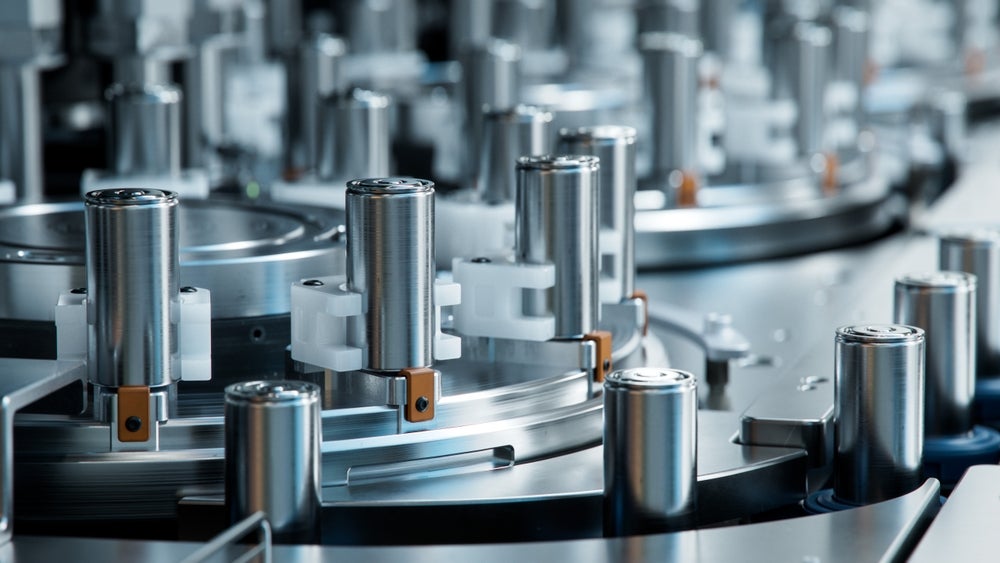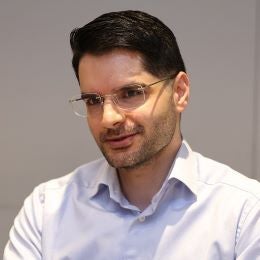
Sam Adham of the CRU Group outlines the challenges ahead for the auto industry wrought by the global energy transition and emerging battery supply chains.

Discover B2B Marketing That Performs
Combine business intelligence and editorial excellence to reach engaged professionals across 36 leading media platforms.
Please note that Sam will be speaking on this subject at the GlobalData Automotive Europe Conference 2025, set to take place on 15-16 October in Munich.
These are exciting and transformative times in the auto industry. How do you think the transition to electric vehicles and away from ICEs is going in general terms?
There is a clear bifurcation in EV adoption between China versus the rest of the world. The transition for China is going along just fine – EVs there are now generally as cheap in terms of price and production cost as their ICE counterparts.
And they could even accelerate it if they wanted to, but China wants a controlled and orderly transition that does not disrupt economic factors and targets while still maintaining China has the leading EV industry and market.
As for the rest of the world, especially Western markets, demand has undeniably underwhelmed compared to automakers’ expectations, but targets and investments have now been recalibrated and rationalised.
It seems now that the teething problems and resistance to change among Western OEMs are now turning into acceptance and pragmatic solutions – shrewd investments in the EV supply chain and software, partnering with Chinese peers and suppliers, making do with options available to them in the context of trade barriers, and ultimately turning these into more affordable and compelling vehicles.
Policy has a habit of getting in the way, but I believe the technology and economics of EVs and batteries are conducive to continued long-term growth.
What do you see as the biggest challenges in the battery supply chain?
The number one priority for OEMs is cost control, but a close second is supply chain de-risking. The challenge is balancing them.
A notable example is that the US has been requiring automakers and battery makers to cut out Chinese companies from their supply chain to be eligible for hefty tax credits. These Chinese suppliers provide the cheapest (and generally the highest quality!) product, and they have the technical advantage, speed, and resources to guarantee delivery.
EV margins for Western automakers are under pressure, and affordability is one of the main barriers to broader EV adoption in Western markets. But supply chain diversification and de-risking is a long-term imperative for manufacturers given the disruptions the industry has seen over the last seven years.
Besides that, a major challenge specific to the West is that their nascent domestic battery industries and supply chains face a horse-and-cart problem: companies are reluctant to invest in supply chain projects if there are no direct customers or suppliers in the region. You wouldn’t set up a precursor plant in the US if there’s no cathode plant to take that material, but you wouldn’t set up a cathode plant if there are no precursor suppliers.
There are a few brave pioneers but they face a massive cash flow risk and scale-up risk, and the automakers and battery makers are reluctant to trust them over experienced suppliers.
So the status quo for now is to have Asia (mainly China, South Korea, Japan, and Indonesia) supply the processed chemicals and advanced materials to be made into batteries in the West.
However, in the long-term OEMs are trying to vertically integrate all the way up to the upstream. That is a daunting task as it’s nowhere near as straightforward as that of the ICE supply chain, but companies that can crack it will define the future of the industry.
Please note that Sam will be speaking on this subject at the GlobalData Automotive Europe Conference 2025, set to take place on 15-16 October in Munich. For more details of the event follow this link.
Sam Adham

Sam Adham is Head of Battery Materials at CRU. He leads the analysis covering the entire battery value chain from mining to end-use, in addition to technology and costs. Sam’s team emphasises strategic thinking, techno-economic understanding, and robust methodology to form unique insights into the future of the battery industry and the energy transition.
Sam is an automotive and battery expert with over a decade of experience at major auto manufacturers, working on advanced engineering projects and strategic planning. He tenured for several years at a leading industry analysis firm before joining CRU.






